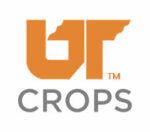Corn and Soybean Response to Cover Crop, Tillage, and Poultry Litter
Research Funded by the United Soybean Board
Henry Sintim, Assistant Professor & Extension Specialist, University of Georgia, Nutifafa Adotey, Assistant Professor and Soil and Nutrient Specialist, University of Tennessee, and Xinhua (Frank) Yin, Professor & Cropping System Scientist, University of Tennessee
Introduction
Degraded soil health conditions threaten the productivity and financial sustenance of soybean production in the southeast United States. With Ultisols as the predominant soil order, the soils in the region are highly weathered and possess a clay-enriched subsoil with relatively low native fertility or a base saturation of less than 35% in the subsoil. Moreover, the soils have a low buffering capacity, which makes soybean production very vulnerable to the impact of climate change because a slight change in environmental conditions can adversely affect crop performance. Regenerative agriculture, which is based on the implementation of agricultural and ecological practices (such as cover crops, crop rotation, organic amendments, and conservation tillage) that minimize soil disturbance and promote the build-up of soil organic matter and biodiversity, could help reform and sustain soybean production in the region. Individual regenerative agricultural practices, however, have their associated benefits and challenges. For instance, conservation tillage has an advantage over conventional tillage in conserving soil and water, while reducing labor and energy requirements. However, transitioning into a no-tillage system can cause short-term soil compaction and extensive reliance on herbicide and pesticide applications.
Research Methodology
The study is evaluating six management systems, including (T1) conservation tillage under no cover crop and with no organic amendment, (T2) conservation tillage under cover crop but with no organic amendment, (T3) conservation tillage under cover crop and with organic amendment, (T4) conventional tillage under no cover crop and with no organic amendment, (T5) conventional tillage under no cover crop but with organic amendment, and (T6) conventional tillage under cover crop and with organic amendment. Treatments T1 and T5 reflect the integration of one sustainable management practice, which is conservation tillage and organic amendment, respectively. Treatments T2 and T6 reflect the integration of two sustainable management practices, which are (a) conservation tillage and cover crop, and (b) cover crop and organic amendment, respectively. Treatment T3 reflects the integration of all three sustainable management practices, which are conservation tillage, cover crop, and organic amendment. The treatments will be arranged in a randomized complete block design with four replications. To evaluate the effects of the various management practices on soybean every year, the experiment will be duplicated on an adjacent field to have another crop in rotation. We will undertake soil health assessments before land preparation for planting. Soil health indicators we will measure include water infiltration, penetration resistance, bulk density, plant-available nutrients (macronutrients and micronutrients), organic carbon, organic matter, soil pH, and soil respiration. Plant growth, productivity, and nutrient uptake will be assessed.
Findings





